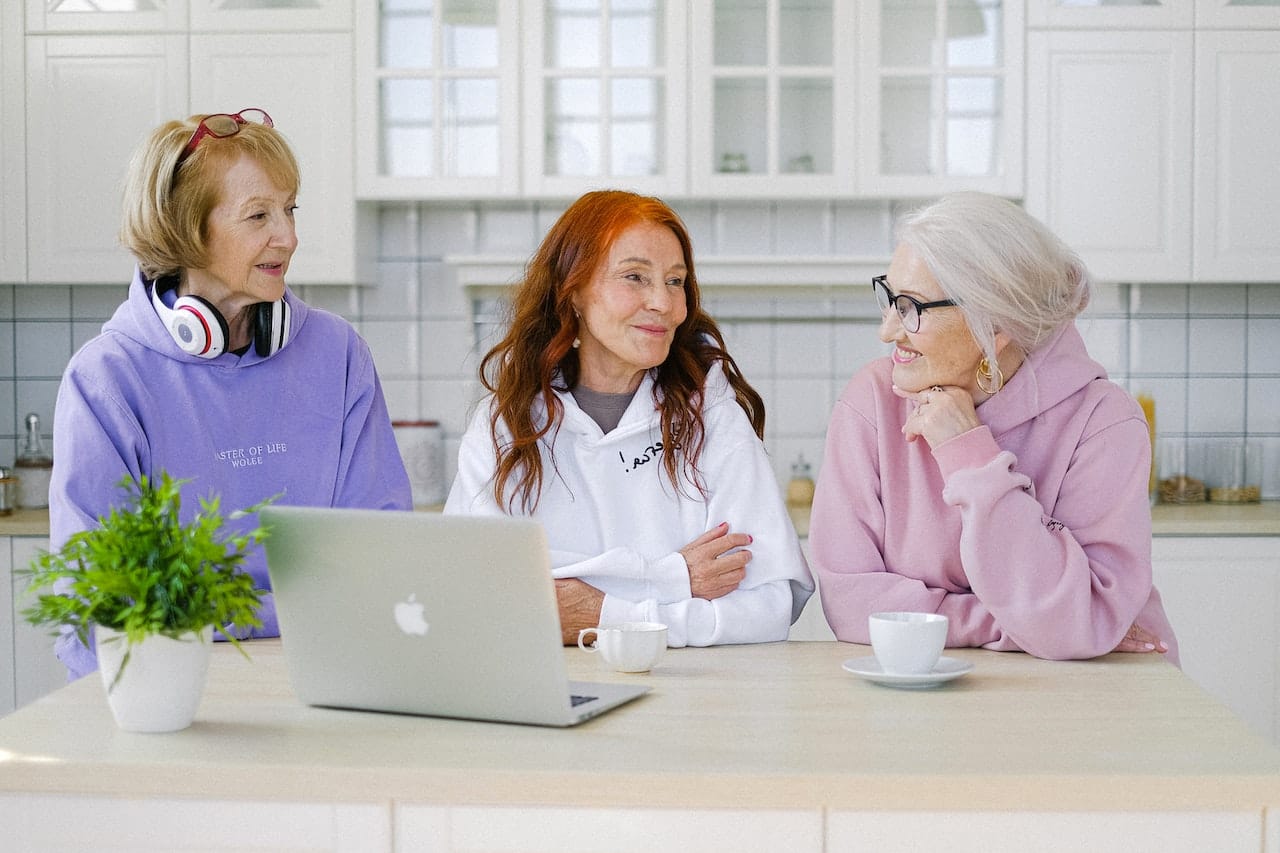Technology for Seniors — The 21st-Century Spin on Aging

It's an old joke that technology and seniors don't mix... but we're not laughing. Used correctly, new technology can help older adults connect with others, stay on top of appointments, detect dangers, and manage other important aspects of their well-being. To us, that's the opposite of a joke; it's the 21st-century spin on aging that keeps everyone together for happier, healthier aging.
6 Ways to Help Older Adults Become Tech-Savvy this Older Americans Month
Need a reason to help Grandma with her digital literacy? May is Older Americans Month in the United States. Celebrate the occasion by helping the aging adult in your life become a little more tech-savvy. You may both be surprised at just how much easier life becomes with a little extra help.
1. Help Them Make the Most of Amazon
If your loved one doesn't have an Amazon account, help them set one up (or add them to yours). Why? Because, used properly, Amazon can be an amazing tool to help seniors navigate their day-to-day lives.
For starters, the company's Amazon Fresh grocery delivery service means your loved one can get meals and ingredients delivered to their own home, giving you peace of mind that your relative won't be without a meal if their mobility is limited.
Older adults can also benefit from Amazon Pharmacy. With this service, older adults can send in prescriptions, set up a payment system, and have their medications delivered straight to their front door. Throw in an automatic medication dispenser (which, yes, of course you can find on this online retailer), and your loved one will have a much easier time taking their medications on schedule.
You could even go one step further and introduce your relative to Alexa, the voice-activated artificial intelligence assistant. As part of an Amazon Smart Home system, Alexa can automatically take care of certain tasks like turning lights off and on or even send out periodic reminders for hair and doctor appointments.
Managing tasks like light switches might seem like a luxury, but that couldn't be further from the truth; it could very well help save your relative from a bad fall. You see, about a quarter of senior citizens in the United States fall every single year. Falls, unfortunately, are a major cause of both nonfatal and fatal injuries for older adults in this country. Part of the reason older adults may stumble? Poorer vision, as they may be unable to see certain obstacles in their way. Having Alexa activate lights for your relative means your loved one can better navigate their home, helping to reduce the odds of a fall due to obscured vision.
2. Introduce Them to Telehealth Services
Healthcare pivoted towards the remote during the COVID-19 pandemic. Since 2020, virtual healthcare or telehealth services—including Medicare and Medicaid—have exploded in popularity, and it's easy to see why: they're incredibly convenient, especially for older adults who may not have reliable access to transportation, experience mobility difficulties, or who are at risk of exposure to serious illnesses.
Even after the worst of the pandemic has passed, reports suggest that telemedicine is here to stay. That's why it could be incredibly beneficial to have your loved one talk with their doctor about available telemedicine services in their network, especially if they've been skipping appointments due to issues like a lack of transportation. Don't worry about Mom not liking this virtual setup, either; according to one study, the majority of older adults polled reported positive experiences with telemedicine.
Not sure where to get started? Not a problem. Below are just a few official government resources you can access to help you help your aging relative access telemedicine services—even if Mom isn't the most technologically-savvy person.
3. Install a Home Security System at Their House
Older adults are unfortunately popular targets for thieves. Give your loved one some extra security (and you peace of mind) by helping them install a home security system. Make sure your preferred system not only has invasion-detection technology, but also emergency-response systems in place to contact authorities if a break-in occurs.
Home security doesn't have to be limited to just break-ins, however; a robust home security system should also include working fire alarms and carbon monoxide detection. For even greater protection, consider installing motion-activated lights on your relative's property. Not only may they deter bad actors, but they may also help your family member more safely navigate their own property in poor lighting conditions.
4. Get Them Smart Watches
Smart watches are the high-tech gadgets that may just replace Grandad's old pocket watch. With a smart watch, older adults will always be connected, receiving notifications of incoming texts, emails, phone calls, and—if set up properly—periodic reminders to take medications.
Some smart watches offer even more utility for aging adults with incorporated fall-detection technology. That's right—medical-alert devices like Life Alert are not your loved one's sole option when it comes to wearable fall-detection technology with real-time response capabilities. Newer devices like Google Pixel Watch, for example, have trackers that can detect when hard falls occur and even contact emergency services on the wearer's behalf.
5. Help Them Set Up a Social Media Account
Staying connected to others is a key component of wellness, especially for people who are at higher risk of experiencing social isolation, like elderly adults. It may not always be the best idea, but if your loved one feels left out and socially disconnected, try setting them up a social media account.
Platforms like Facebook are especially easy for an older person to navigate. You can even help your relative find Facebook groups that may interest them and get them involved in an online community.
Some Facebook groups that may be of interest to seniors include:
6. Hold Video Calls Regularly
Phone calls, emails, and texts are great ways to communicate, but they miss something crucial: the human element of seeing the other person's face. Video chats can add that human element. Zoom, Facebook Chat, and Skype are all just a few of the platforms you can use to help your aging family member have a (virtual) face-to-face conversation.
You or your loved one's caregiver can help set up their iPhone or iPad with a video chat app so that initiating or receiving these calls is easy. If iPhones are too complicated, however, your aging relative may benefit from tech specifically designed for an older person, like the GrandPad®, which touts itself as being a secure and easy-to-navigate tablet for older adults.
Using Technology for Seniors at St. Andrew's
We are the senior care providers that can help you learn new ways to incorporate tech into your loved one's daily routine, both at home or in one of the senior living communities in our network.







